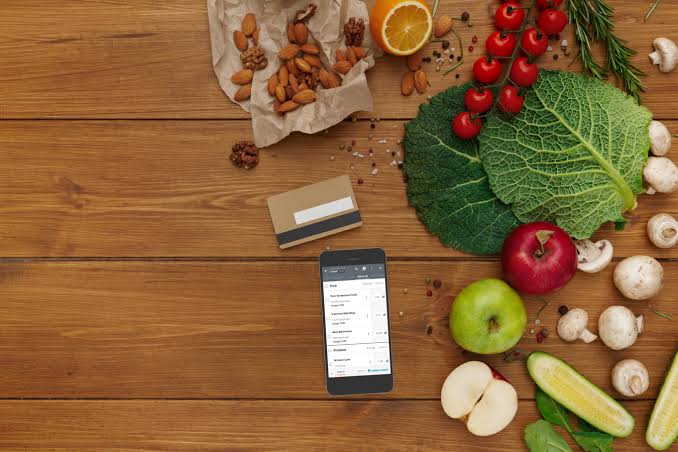
Food Cost Formula: How to Calculate Food Cost Percentage
Food costs can be the bane of your existence or they can be the most helpful restaurant metric you’ll ever calculate.
However, many restaurateurs don’t calculate food cost percentage for individual items on their menu because it can be time-consuming and confusing.
In this post, we’ll share our food cost formula and explain why it’s important that every restaurateur know how to calculate food cost percentage.
How to Calculate Food Cost Percentage
As a chef, it’s nice to know if individual items are profitable or not using recipe cost calculators like However, as an owner, you need to know if your entire business is on track for success.
The average food cost percentage is 35% for a fine dining restaurant and 25% for a quick service restaurant. How do you find this number? You look at your weekly inventory.
1. List all food supplies you received at the start of week. Many inventory software systems work on tablets, so you can walk around the back of house checking off items like you would on a clipboard.
2. Sum together the value of each item. How much did you pay for each box of chicken in your back of house?
3. Track your purchases. Were there any other purchases that you made within the week, after beginning inventory?
4. Take inventory again at the beginning of next week. Follow the same exact process. Many recommend a shelf-to-sheet system, where your inventory tracking system is set up as your back of house is.
5. Add together total food sales per shift. Many POS systems with restaurant analytics can give you this information automatically.
6. Calculate actual food cost for the week. Complete the following food cost formula:
Check out the example below to see this formula in action. Beginning Inventory = EGP15,000 Purchases = EGP4,000 Ending Inventory = EGP16,000 Food Sales = EGP10,000 Food Cost Percentage = (15,000 + 4,000 – 16,000) ÷ 10,000 Food Cost Percentage = 3,000 ÷ 10,000 Food Cost Percentage = 0.30, or 30%
Quick Tip: Is your food cost percentage dramatically too high or too low? Make sure you’ve counted each item correctly, inputted the right unit, and have accounted for each purchasing invoice.
How to Calculate Ideal Food Cost Percentage
It’s often not enough to calculate total food cost and call it a day.
You need something to compare it to in order to know whether your restaurant is succeeding. And no, I’m not suggesting you compare your restaurant to other restaurants (that’s a quick path to failure). I’m suggesting you compare your actual food costs to your ideal food costs. In an ideal world, there would be no waste or theft in your restaurant. This model doesn’t take beginning and ending inventory and instead simply calculates total costs and total sales for each item.
Calculate total cost per item, or recipe food cost: Recipe Food Cost = Food Cost of Ingredients x Weekly Amount Sold Calculate total sales per item: Total Sales Per Item = Sales Price x Weekly Amount Sold Calculate ideal food cost: Ideal Food Cost = Total Cost Per Item ÷ Total Sales Per Item In this example: Total Costs = EGP2,500 Total Sales = EGP10,000 Ideal Food Cost = 2,500 ÷ 10,000 Ideal Food Cost = 0.25 = 25%
In these two examples, ideal food cost is 25% and actual food cost is 30%. Now we know that there’s an extra 5% of profit from this restaurant, either due to waste, theft, or purchasing. Ultimately, you want your actual food cost to match or even be below your ideal food cost, or what some call your “maximum allowable” food cost.
Why Food Cost Percentage is Important
Often, restaurateurs don’t take food cost percentage seriously. And I get it: food cost percentage isn’t a number that goes directly into the bank. However, optimizing your food cost percentage can help you reach maximum profits – and that will definitely inflate your bank account.
All the most successful franchises understand the value behind food costs. For example, McDonald’s sells 68 million burgers a day, so if they are off a single penny on their costs of goods sold, then they are losing $680,000 per day… or $248 million per year.
In a more relevant example, Joe runs a successful and busy restaurant that serves 350 customers per day. If he doesn’t pay attention to his food costs, and his appetizers, salads, entrées, beverages, desserts, or coffee are mispriced by 75 cents, then Joe could lose $100,000 in revenue per year.
Obviously, going through the extra trouble of calculating food cost percentage and cost of goods sold down to the individual cookie, slice of bread, or burger, can actually help your restaurant in the long run.
Better data allows you to make better decisions. Here are four benefits to knowing food cost percentage.
1. Have better control over the profitability of your restaurant.
Price each menu item based on the costs of goods sold. Make sure each menu item fits within your food costs margin (ex. 25%). Know which menu items to promote because they are the most profitable.
2. Make sure you have no wasted opportunities.
With this restaurant data at your fingertips, you can remove or change old menu items that are no longer profitable. Menu engineering based on food cost percentage will give you the insight you need to retire that recipe, change it up, or re-price it.
3. Have a better understanding of how each order impacts costs and profitability.
The avian flu caused the price of eggs to spike. If you serve breakfast or make baked goods (i.e. – use a lot of eggs), then this spike will have a bigger impact on your costs of goods sold and profits.
4. Experiment intelligently with new prospective recipes.
Make a new recipe and see if it fits within your ideal food cost percentage. If it doesn’t, then see if you can adjust the recipe – or keep it on the sideline for your next family dinner.

 WhatsApp us
WhatsApp us